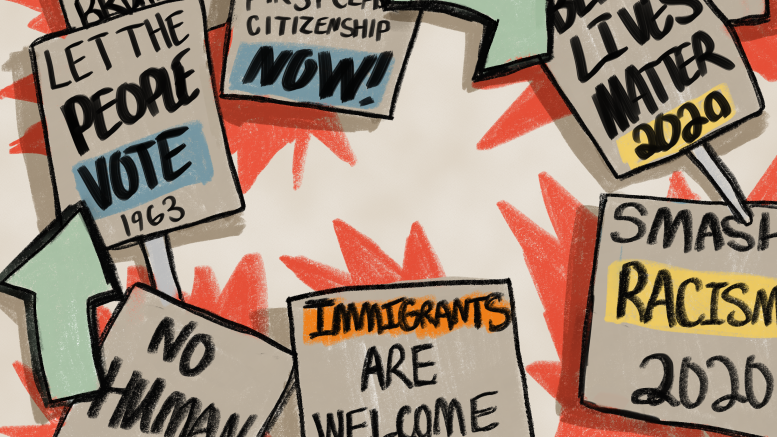Doing research several centuries after the slave trade, it appears as though hate and bigotry may be everlasting topics. This is not to say signs of hate or bigotry did not exist before that era. Humanity has always found ways to ‘other’ one another, but the transatlantic slave trade crystallized racial hate and ethnic bigotry into systemic, exportable institutions. It is as if, from that period onward, hate found new machinery.
I begin with the slave trade era because it seems to me that it casts the longest shadow. Like a scarf or veil that refuses to be lifted, its imprint is still felt even in our age of progress, technology and policy reform. It is felt in these two concepts of hate and bigotry.
Between the 16th and 19th centuries, an estimated 12.5 million Africans were forcibly taken across the Atlantic. We need not dive into details today, however this ‘mass racial project’ constructed Blackness as less than human, to justify economic exploitation. Over time, laws, pseudoscience and religion were weaponized to validate this hierarchy.
This project did not just rob people of freedom, it birthed a way of thinking. It institutionalized the idea that difference may equal danger, and that some people deserve fewer rights than others because of their appearance or origin. This logic—that one’s racial or ethnic identity justifies social control—is mirrored in colonization, apartheid and policing.
While the slave trade eventually ended, the ideology it produced did not. Its remains show up in racial profiling, hate crimes, over-policing, strip searches, immigration exclusions and bigotry in all its forms.
However, if you are new to the block, let me introduce you to these hydra-headed serpents. Hate in legal terms is often referred to as hate crimes. According to the Toronto Police Service, “A hate crime is a criminal offence committed against a person or property motivated in whole or in part by the offender’s (real or perceived) bias, prejudice or hate against an identifiable group.”
Bigotry, on the other hand, is less codified in law and therefore less likely to appear in court. However, it is still likely to appear everywhere else. It depicts intolerance toward those who are different, rooted in beliefs about a group based solely on their perceived membership in that group.
Although the world has made significant progress and witnessed increasing tolerance among humans, these sibling concepts do not die — they transform, they evolve.
Apartheid, for instance, ended in 1994, but economic inequality and state violence remain deeply racialized in South Africa. In France, post-colonial immigration laws have disproportionately targeted North Africans and ‘laïcité’ (secularism) is weaponized against Muslim communities, especially Muslim women. In Australia, the historical removal of Aboriginal children (the Stolen Generations) has morphed into their overrepresentation in child welfare and incarceration systems. In Canada, residential schools may be ‘historical,’ but today, Indigenous people are over 10 times more likely to be incarcerated.
Anti-Black racism found new language in segregation, redlining, underfunded schools and laws that seemed neutral but were not. We also saw the rise of civil rights, only to watch mass incarceration take root. We preached diversity in boardrooms, while prisons filled with Black and Indigenous bodies. We introduced anti-racism trainings, but deportation policies hardened. Bigotry does not shout. It moves quietly, speaks in legalese and in polite deflections.
These are not isolated cases — they reflect a pattern. As a student who researches these phenomena, this is one of the hardest truths to hold. You want your research to matter, your paper, thesis, conference presentation to spark change—or at least contribute to it — but sometimes it feels like you are chasing a shadow. By the time you write about one problem, the system has already found another backdoor.
For instance, you read about the reforms made to ‘solitary confinement’ in Canada, prompted in part by concerns over its operation and the overrepresentation of certain groups. At first glance, it looks like progress, but when you dig deeper you find that Black and Indigenous people are still overrepresented. The name has changed, but the effect has not.
It is like trying to put out a fire, only to realize the blaze has already spread somewhere else.
And yet, we keep researching and writing. Not because we believe the next journal article will end racism, but because we believe in slowing it down, exposing it faster and equipping people to recognize its disguise. If hate is going to keep mutating, we need to stay nimble. We need to notice the pattern, name it and teach others to do the same.
So yes, the paper is still due and the world still burns. We will keep writing, because just maybe we will help someone else see the smoke sooner.

